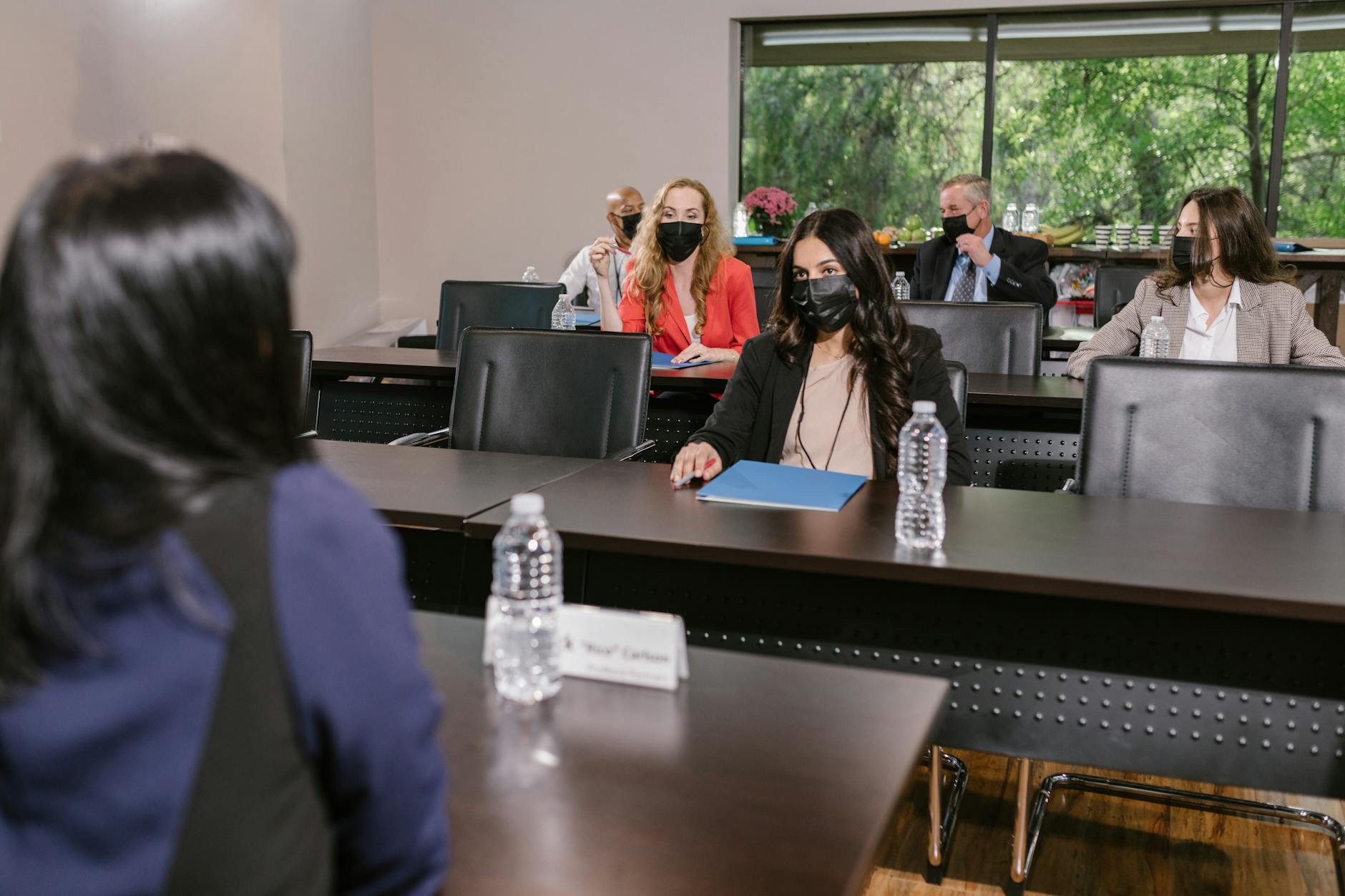
30 Critical Safety Moments to Discuss in Meetings
1. Proper Use of Personal Protective Equipment (PPE)
- Ensure all workers wear appropriate PPE (helmets, gloves, goggles, etc.).
- Regularly inspect PPE for damage and replace if necessary.
- Reinforce the importance of PPE compliance to prevent injuries.
2. Slips, Trips, and Falls Prevention
- Keep walkways clear of obstacles and spills.
- Use caution signs for wet floors.
- Wear slip-resistant footwear in hazardous areas.
3. Ladder Safety
- Inspect ladders before use for stability and defects.
- Maintain three points of contact while climbing.
- Avoid overreaching or standing on the top rung.
4. Electrical Safety
- Never handle electrical equipment with wet hands.
- Use lockout/tagout (LOTO) procedures when servicing machinery.
- Report frayed wires or damaged equipment immediately.
5. Fire Safety and Emergency Exits
- Know the locations of fire extinguishers and emergency exits.
- Conduct regular fire drills.
- Keep exits unobstructed at all times.
6. Hazard Communication (Chemical Safety)
- Properly label all hazardous chemicals.
- Use Safety Data Sheets (SDS) for handling instructions.
- Wear appropriate PPE when handling chemicals.
7. Manual Handling and Lifting Techniques
- Lift with your legs, not your back.
- Avoid twisting while carrying heavy loads.
- Use mechanical aids (dollies, forklifts) when possible.
8. Machine Guarding and Equipment Safety
- Never remove safety guards from machinery.
- Follow lockout/tagout procedures during maintenance.
- Report malfunctioning equipment immediately.
9. Working at Heights
- Use proper fall protection (harnesses, guardrails).
- Inspect scaffolding and platforms before use.
- Avoid working at heights in adverse weather conditions.
10. Confined Space Entry Procedures
- Test air quality before entering confined spaces.
- Use proper ventilation and monitoring equipment.
- Always have a standby attendant for emergencies.
11. Forklift and Heavy Equipment Safety
- Only trained operators should use forklifts.
- Follow speed limits and load capacity guidelines.
- Always check blind spots before moving.
12. Preventing Repetitive Strain Injuries
- Take regular breaks to avoid overexertion.
- Use ergonomic tools and workstations.
- Stretch before and after repetitive tasks.
13. Workplace Violence Prevention
- Recognize and report aggressive behavior.
- Implement security measures (badges, cameras).
- Train employees on de-escalation techniques.
14. Heat and Cold Stress Prevention
- Stay hydrated and take breaks in hot environments.
- Wear appropriate clothing for extreme temperatures.
- Recognize signs of heatstroke and hypothermia.
15. First Aid and Emergency Response
- Know the location of first aid kits.
- Train employees in basic first aid and CPR.
- Have emergency contact numbers posted visibly.
16. Distracted Driving and Vehicle Safety
- Avoid using phones while operating vehicles.
- Follow speed limits and traffic rules.
- Conduct pre-trip vehicle inspections.
17. Noise Exposure and Hearing Protection
- Wear earplugs or earmuffs in high-noise areas.
- Limit exposure to loud machinery.
- Conduct regular hearing tests for workers.
18. Housekeeping and Worksite Cleanliness
- Keep work areas free of clutter and debris.
- Dispose of waste materials properly.
- Store tools and equipment in designated areas.
19. Eye Safety and Protection
- Wear safety goggles when working with flying debris.
- Avoid rubbing eyes after handling chemicals.
- Use face shields for grinding or welding tasks.
20. Hand Tool Safety
- Use the right tool for the job.
- Inspect tools for damage before use.
- Store sharp tools properly to prevent injuries.
21. Preventing Burns and Scalds
- Use insulated gloves when handling hot materials.
- Follow proper procedures when working with steam or hot liquids.
- Know first aid for burns.
22. Safe Handling of Compressed Gases
- Secure gas cylinders upright and away from heat.
- Use regulators and check for leaks.
- Wear protective gear when handling gases.
23. Preventing Struck-By and Caught-In Hazards
- Stay clear of moving machinery.
- Secure loads to prevent falling objects.
- Be aware of pinch points in equipment.
24. Respiratory Protection
- Use masks or respirators in dusty or fume-filled areas.
- Ensure proper fit and maintenance of respirators.
- Follow OSHA guidelines for airborne hazards.
25. Preventing Overexertion and Fatigue
- Rotate physically demanding tasks among workers.
- Encourage proper rest and hydration.
- Recognize early signs of fatigue.
26. Safe Use of Power Tools
- Disconnect tools when not in use.
- Wear appropriate PPE (gloves, goggles).
- Follow manufacturer instructions for operation.
27. Preventing Cuts and Lacerations
- Use cut-resistant gloves when handling sharp objects.
- Keep blades and knives properly stored.
- Dispose of broken glass safely.
28. Safe Material Storage and Stacking
- Stack materials securely to prevent collapses.
- Follow weight limits for shelving.
- Store hazardous materials separately.
29. Preventing Drowning in Water-Related Work
- Wear life jackets near deep water.
- Never work alone in water hazards.
- Follow confined space safety for tanks and pits.
30. Mental Health and Stress Management
- Encourage open discussions about workplace stress.
- Provide resources for mental health support.
- Promote work-life balance to prevent burnout.
By discussing these 30 Critical Safety Moments in meetings, organizations can reinforce a strong safety culture and reduce workplace incidents. Stay safe!
How To Conduct HSE Induction Training
25 Workplace Safety Topics for Meetings